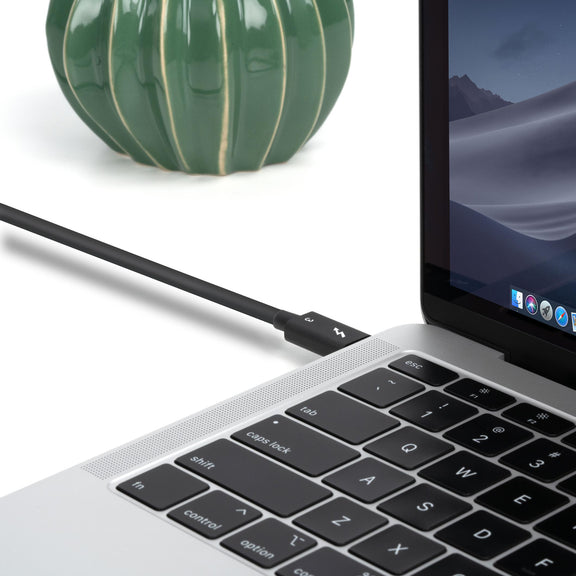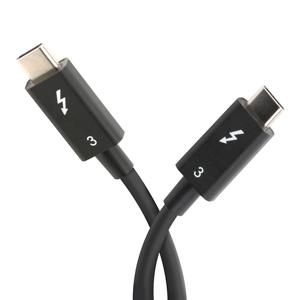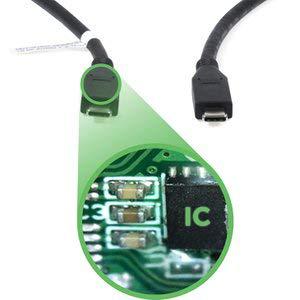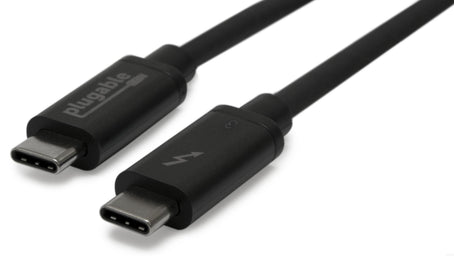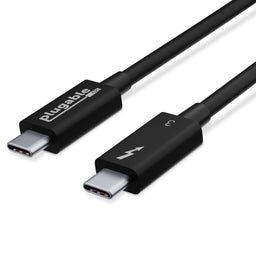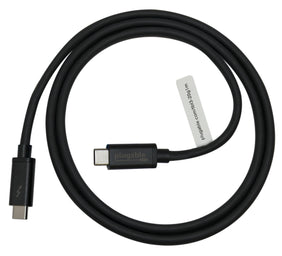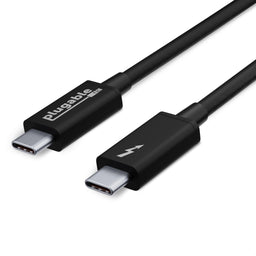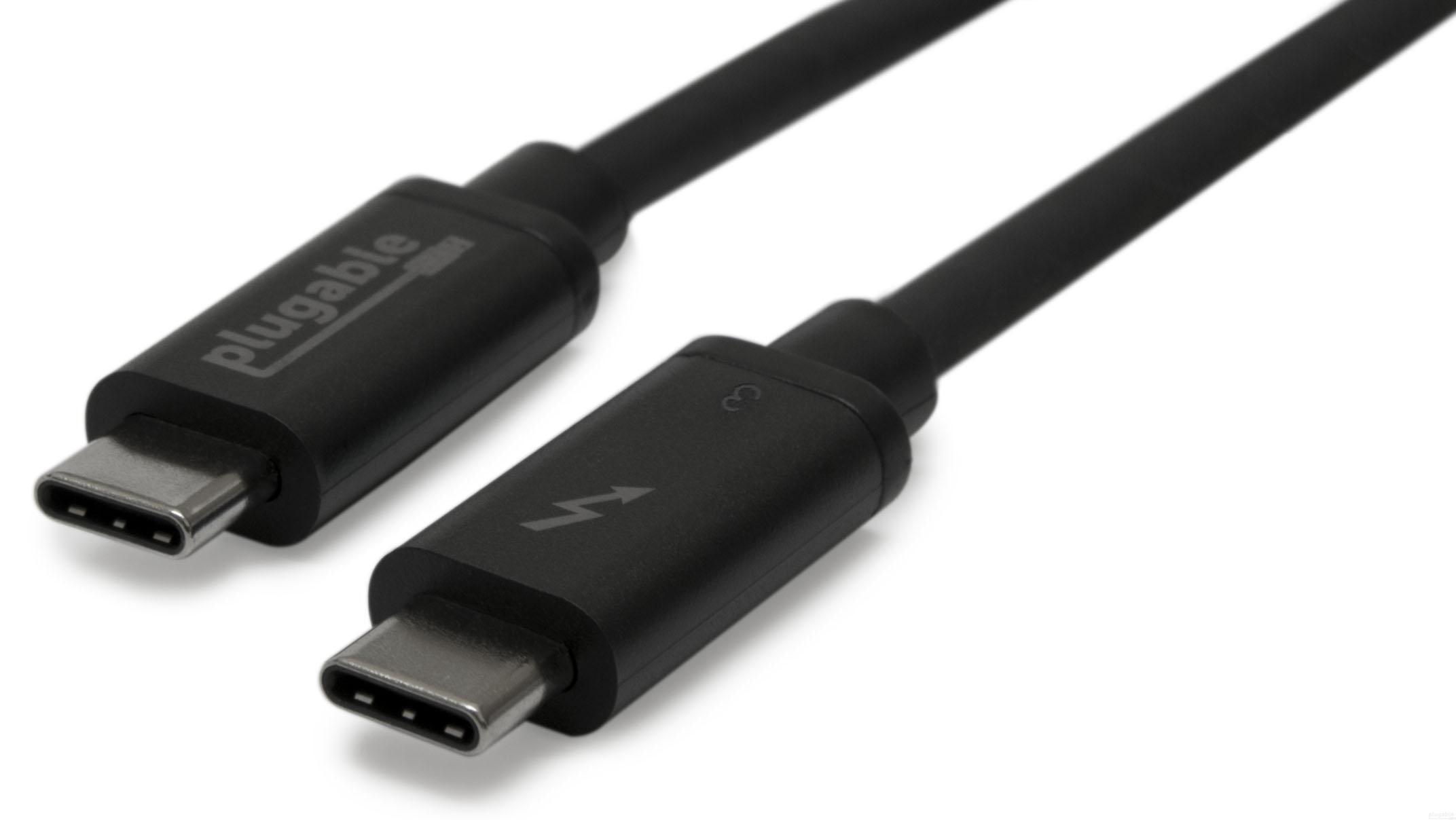
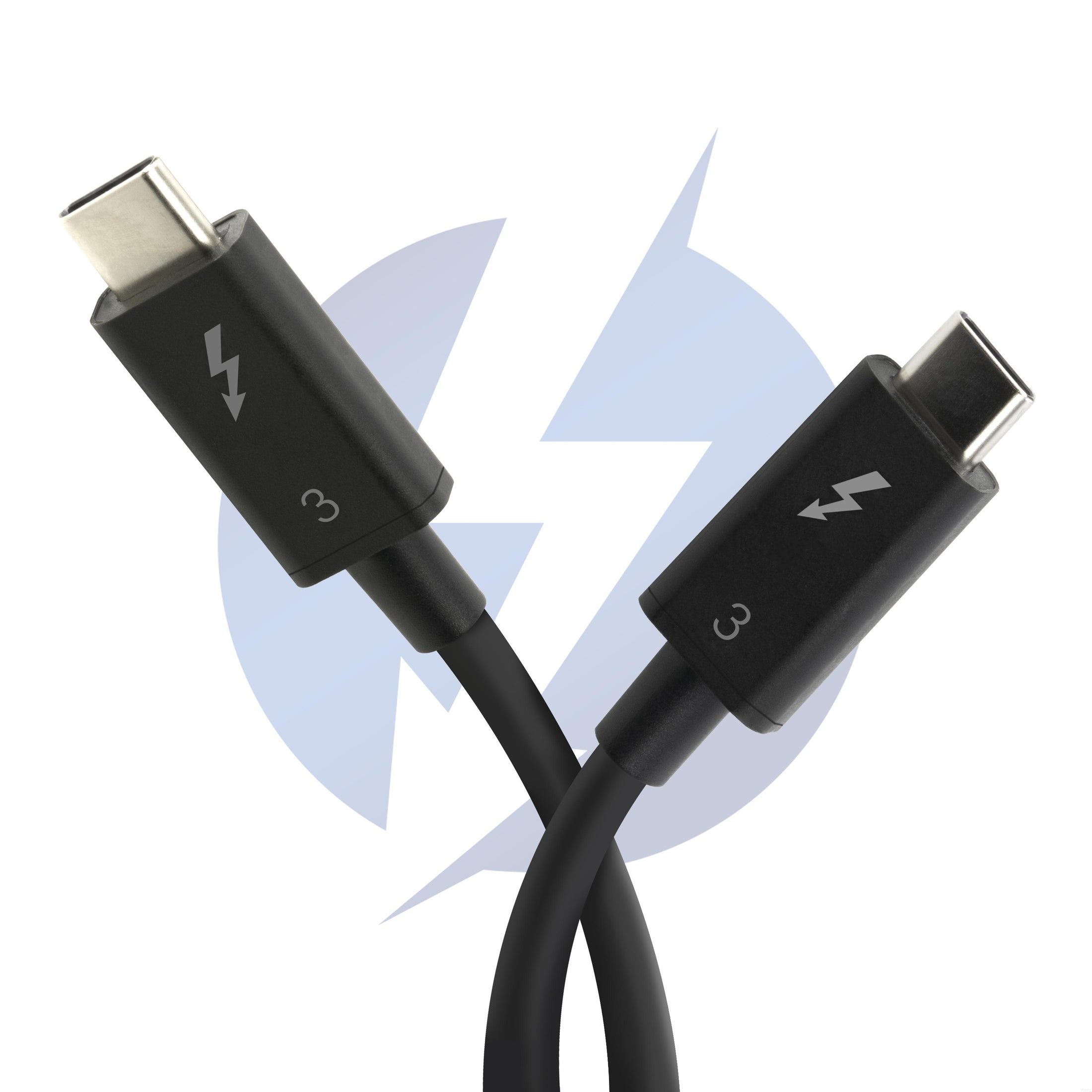
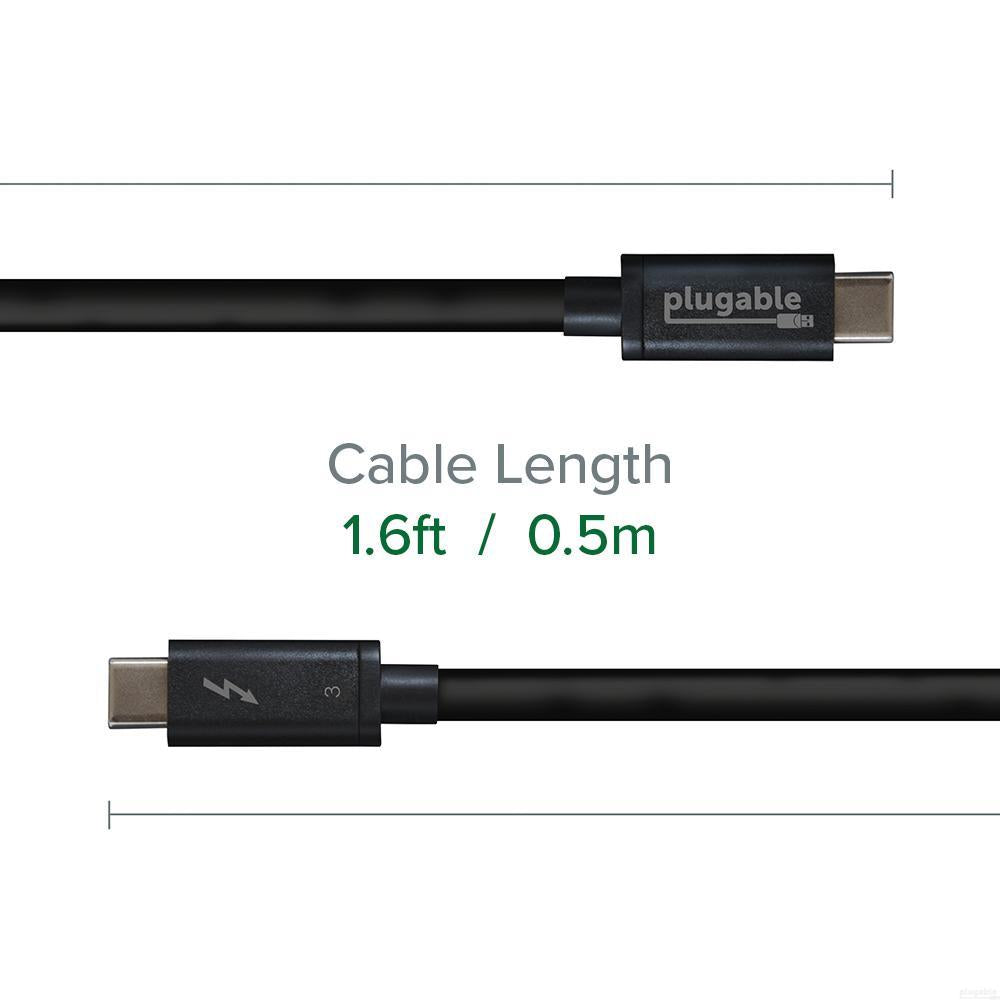

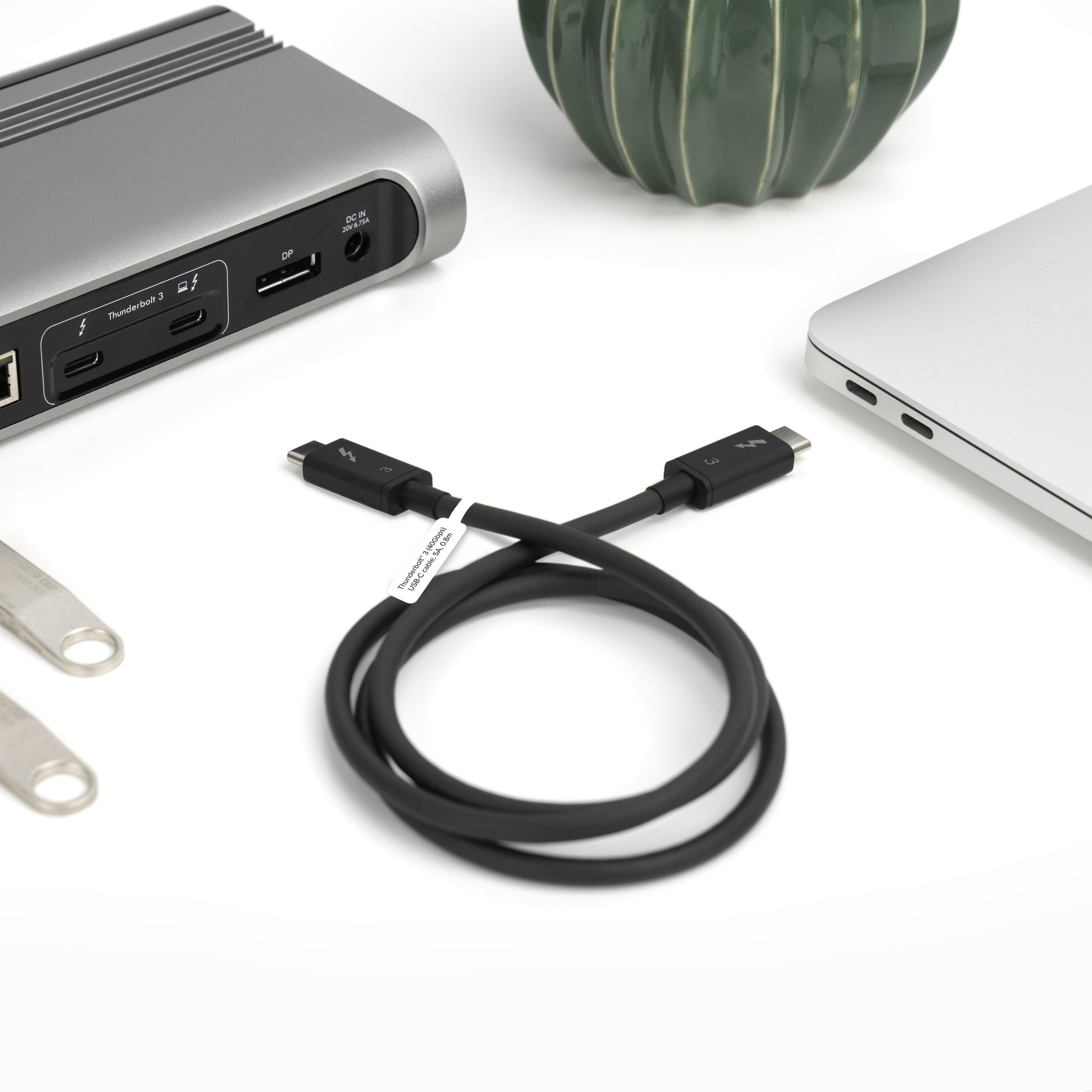
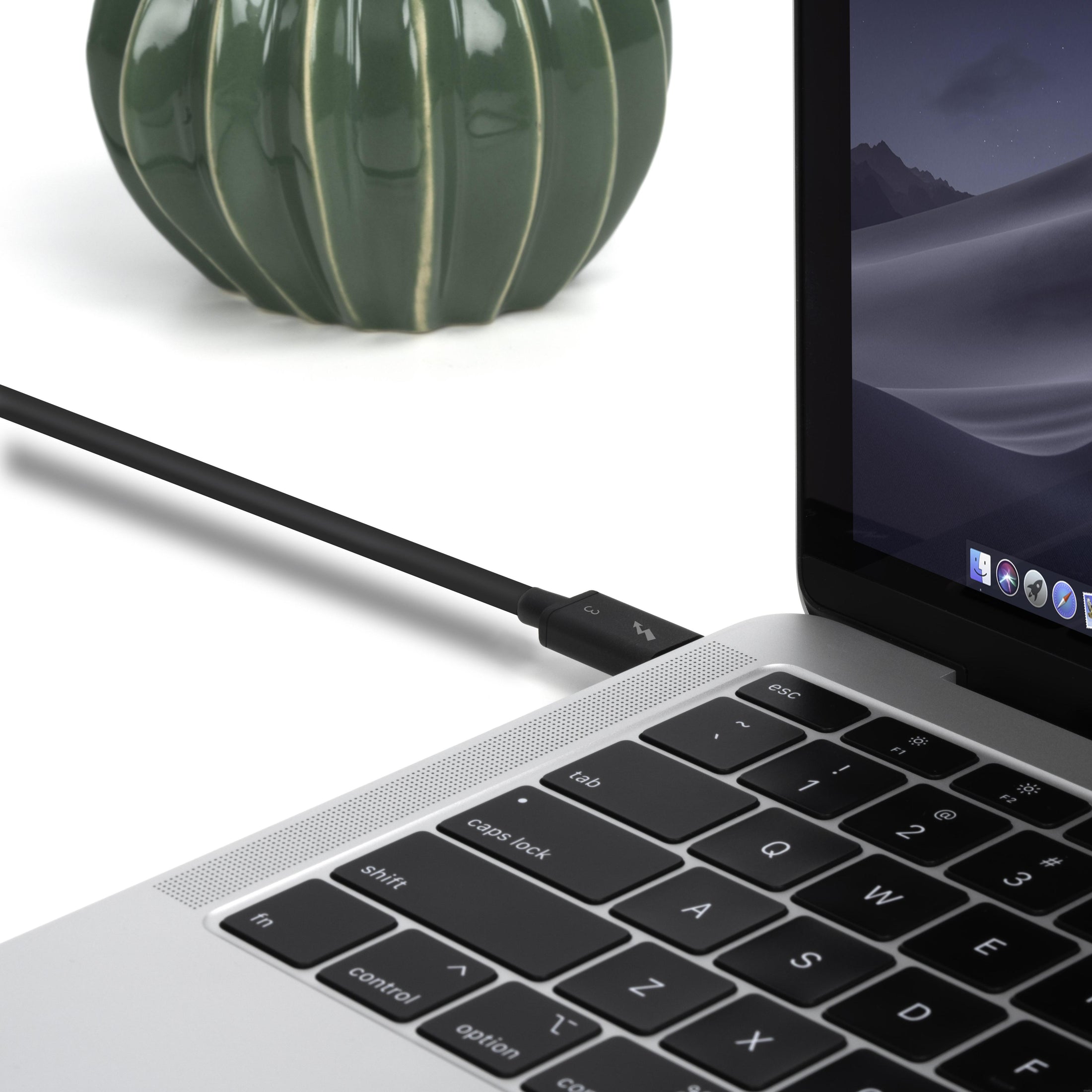
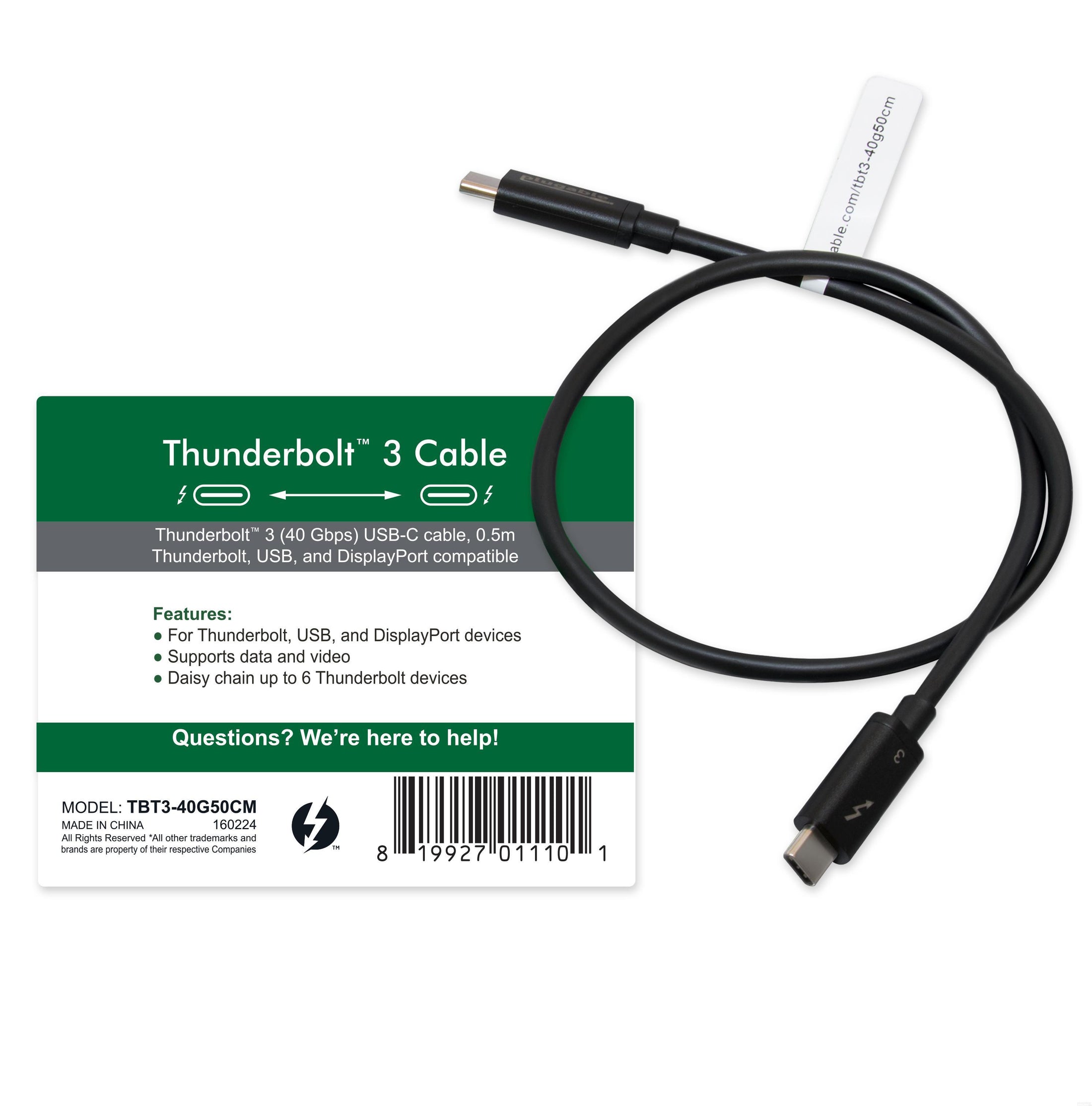

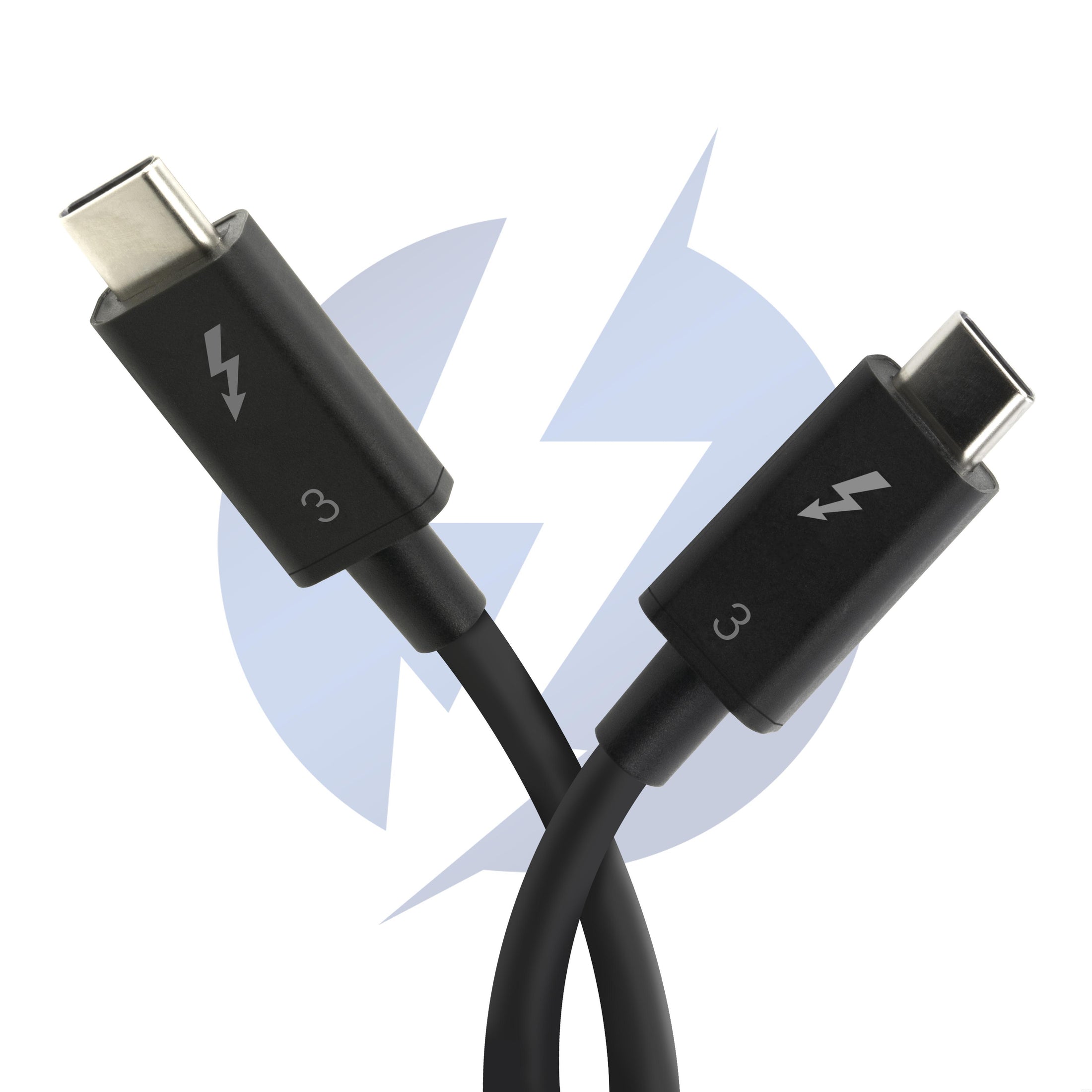

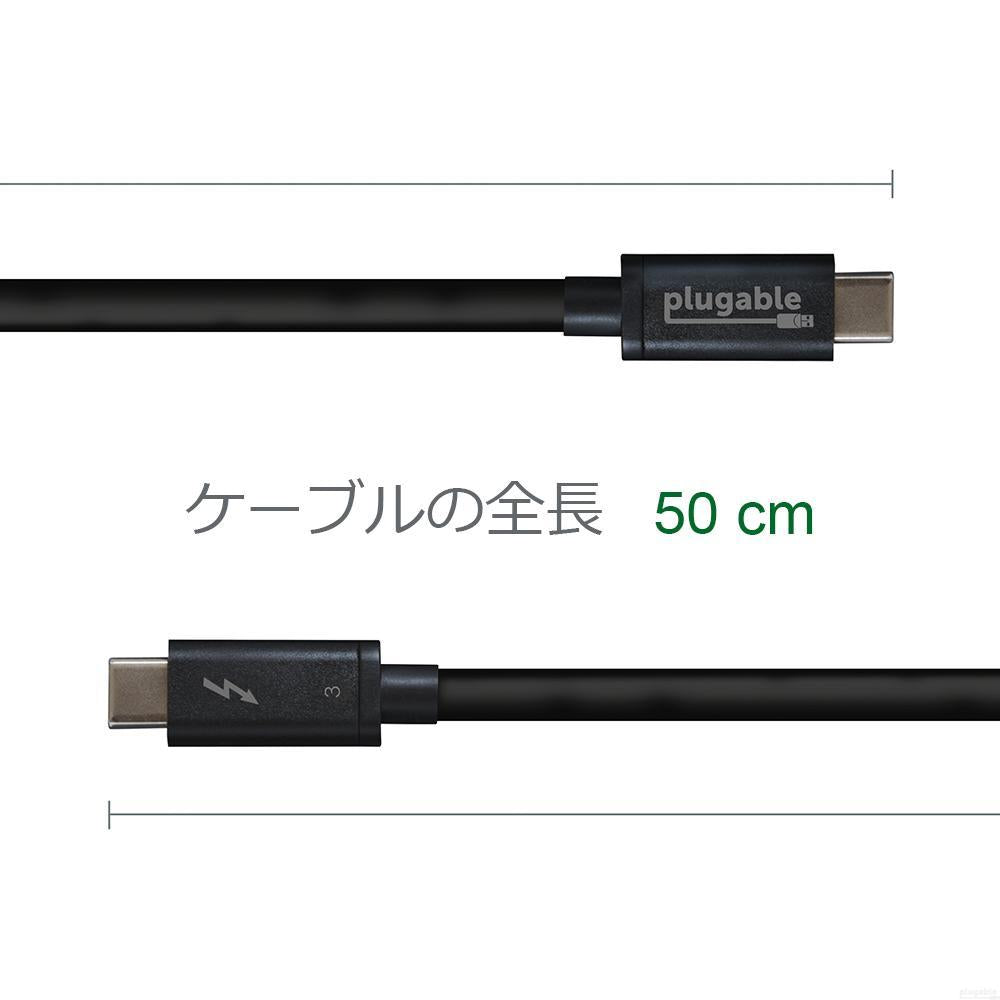
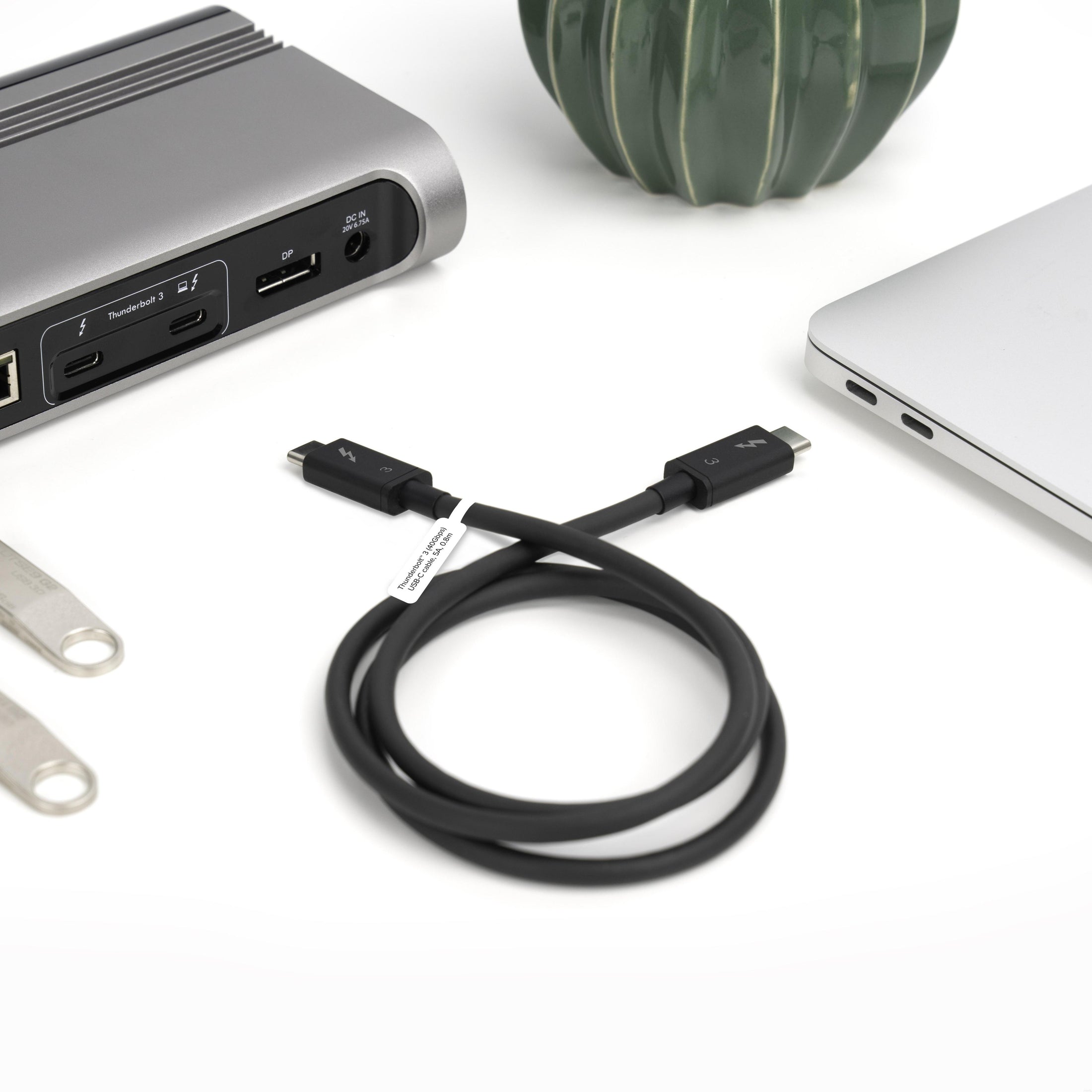
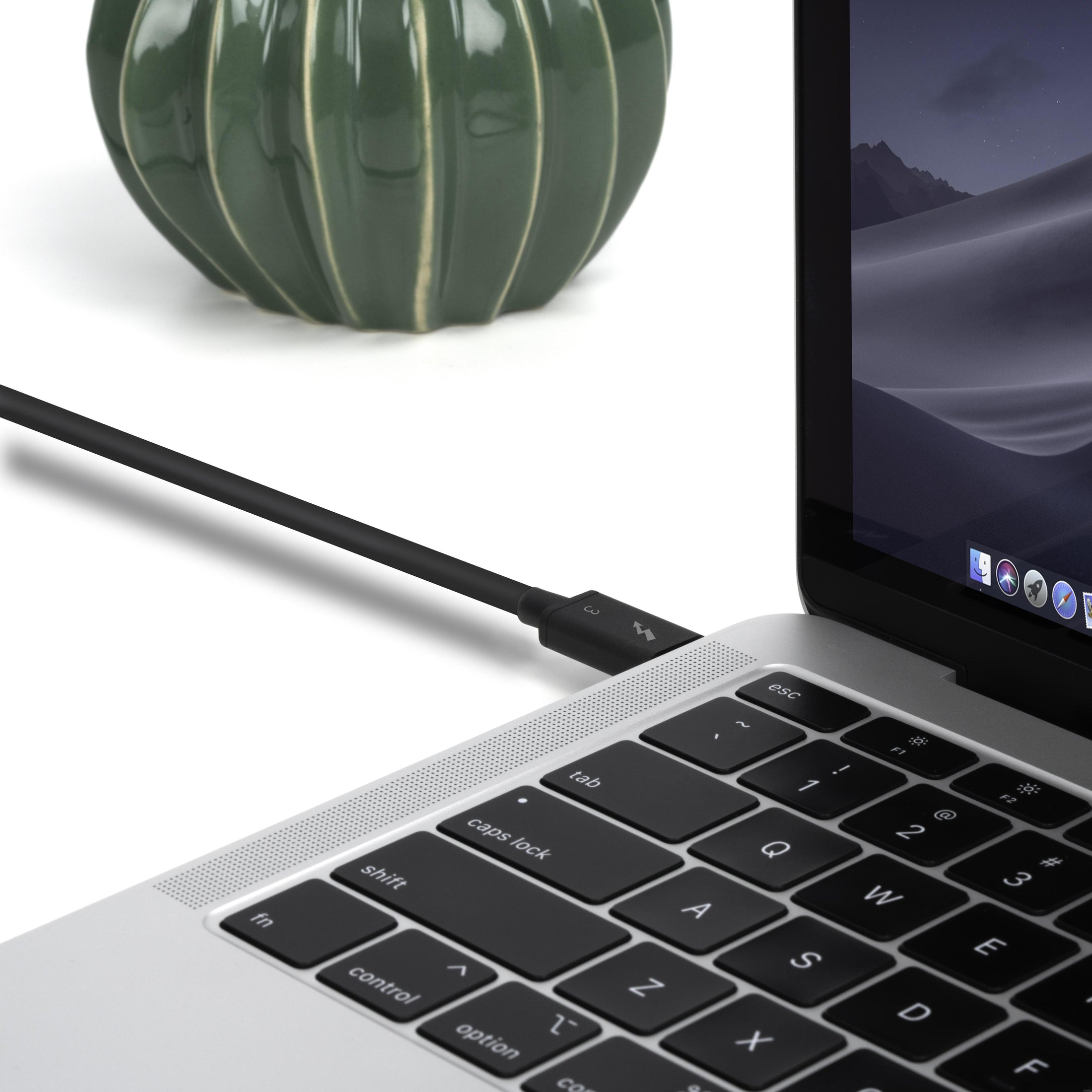
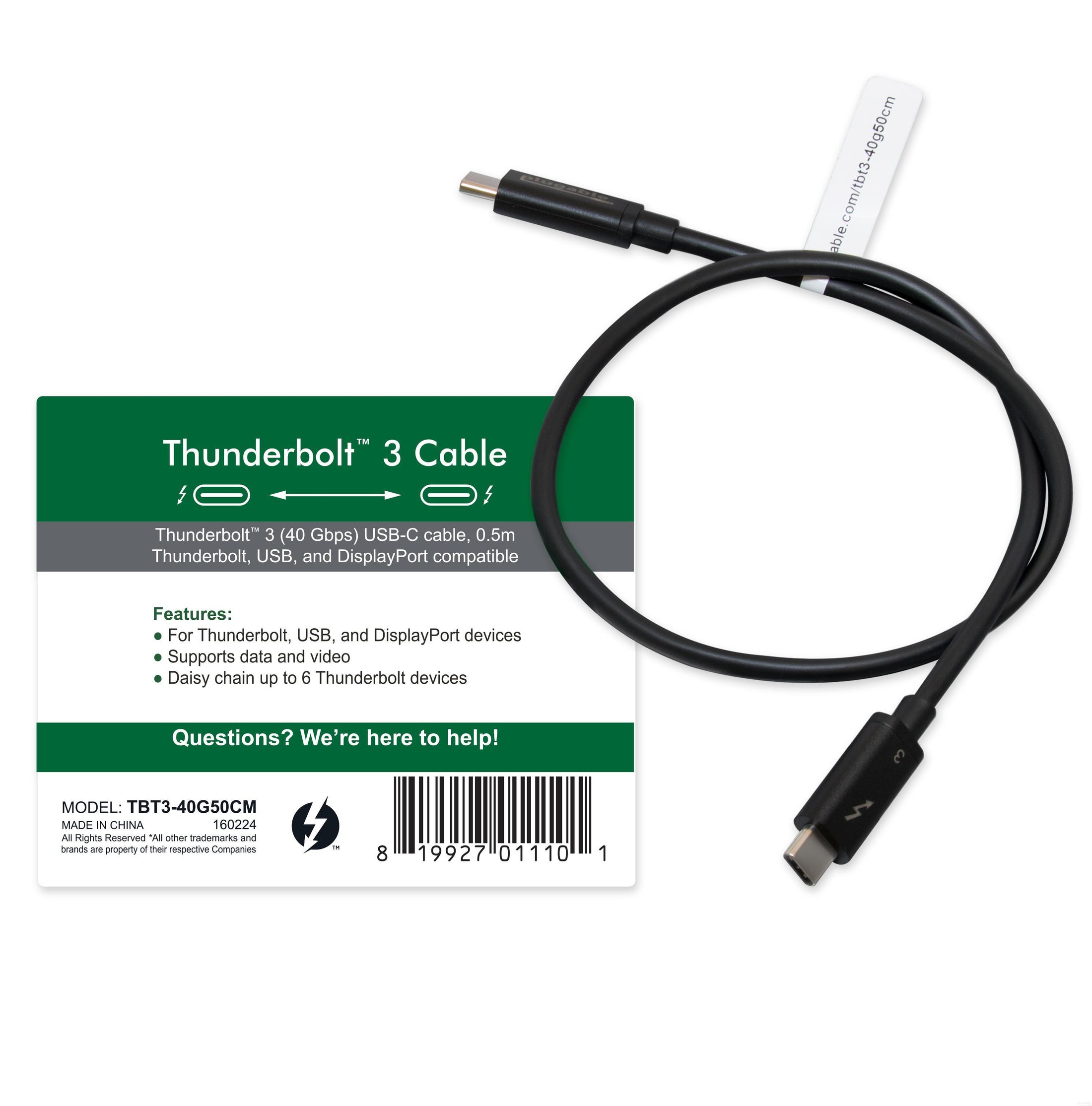
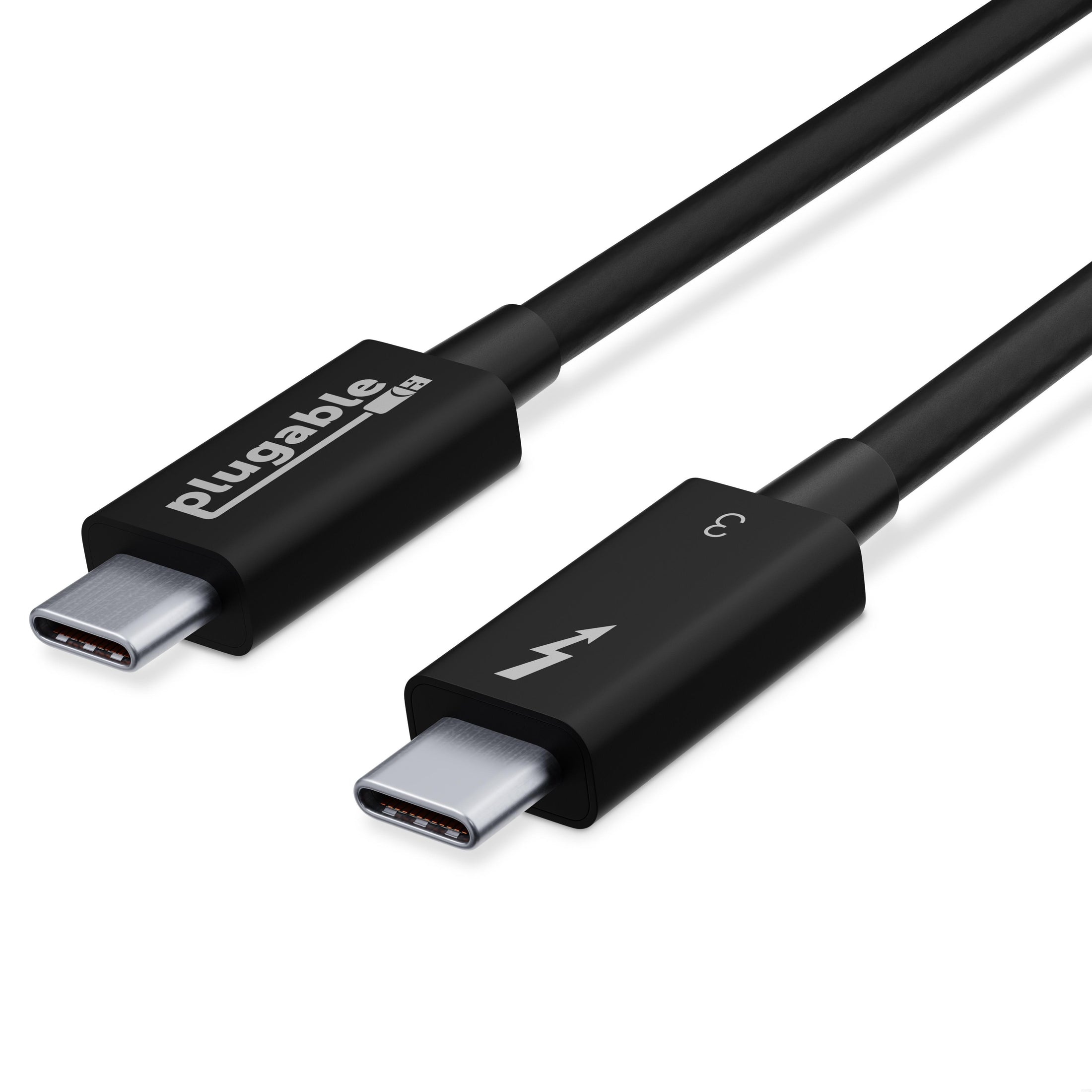















Hassle free, 2-Year Warranty
Fast, Free Shipping on Orders $35+
Lifetime Technical Support
30-Day Money Back Guarantee
Plugable Thunderbolt 3 Cable (40Gbps, 1.6ft/0.5m)
$29.95 USD
SKU: TBT3-40G50CMAmazon Rating : (2031 Reviews)
Features
- More Possibilities— Thunderbolt 3 cable with 40Gbps speed and USB 3.0 5Gbps compatibility. Supports data transfer 2x faster than standard USB-C cables. Depending on host, up to 2x 4K 60Hz or 1x 5K 60Hz displays supported, and up to 20V, 3A charging
- High Productivity— Daisy chain up to 6 Thunderbolt devices including docking stations, external graphics cards, and displays. 40Gbps speed cables are suitable for eGPU and dual 4K display scenarios. Thunderbolt 3 peer-to-peer 10Gbps networking supported
- Apple Notes— Thunderbolt 3 uses the USB-C connector built into late 2016 MacBook Pros and newer models. This connector will not physically fit into Thunderbolt 1 or Thunderbolt 2 ports found on previous generation Mac systems
- Compatibility— Thunderbolt, USB and DisplayPort Alt Mode compatible. Compatible with your Thunderbolt 3 enabled Mac and Thunderbolt 3 Windows PCs, and non-Thunderbolt USB-C systems. Incompatible with QC 3.0 and other non USB-compliant technologies
- 2-Year Coverage, Lifetime Support— Every Plugable product, including this cable, is covered against defects for 2 years and comes with lifetime support. If you ever have questions, contact our North American-based team - even before purchase
This product is discontinued.

